
Starting your gardening journey can be fun and easy.
You’ll want to choose a good spot with plenty of sunlight and use quality soil. This will help your plants grow strong and healthy.
Gardening is a great hobby that can bring you joy and yummy fruits and veggies.
To get started, consider beginning with easy-to-grow plants and understanding your local planting zones.
By following these simple steps, you can set yourself up for success and have a beautiful garden in no time.
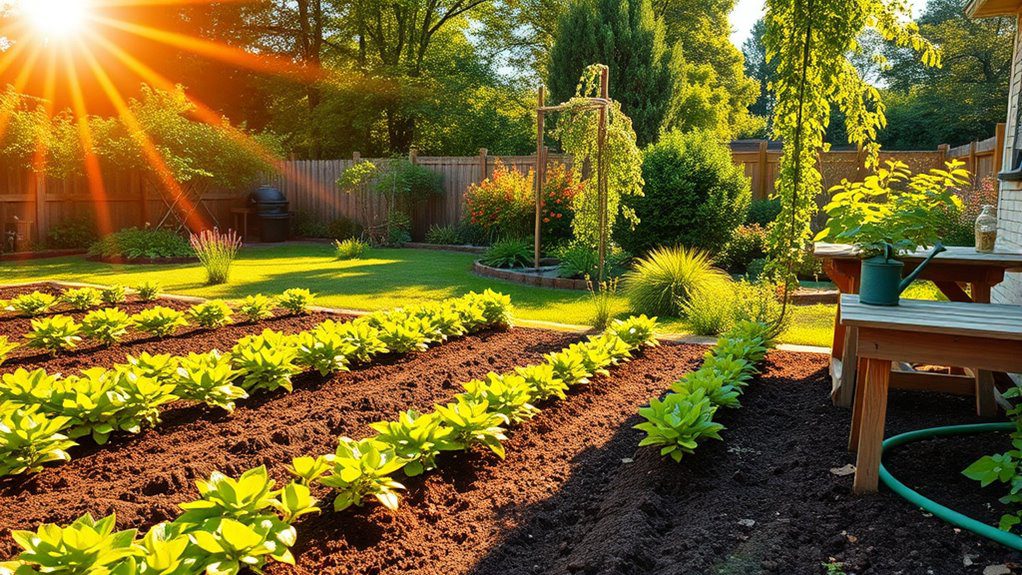
Choosing the right location for your garden is essential for its success. Look for a spot that receives at least 6-8 hours of sunlight daily, as most plants thrive in full sun. Consider the soil quality, drainage, and accessibility for maintenance. Also, protect your garden from strong winds and guarantee it’s near a water source for easy irrigation. By selecting the ideal location, you’ll create a healthy environment that promotes growth and productivity.
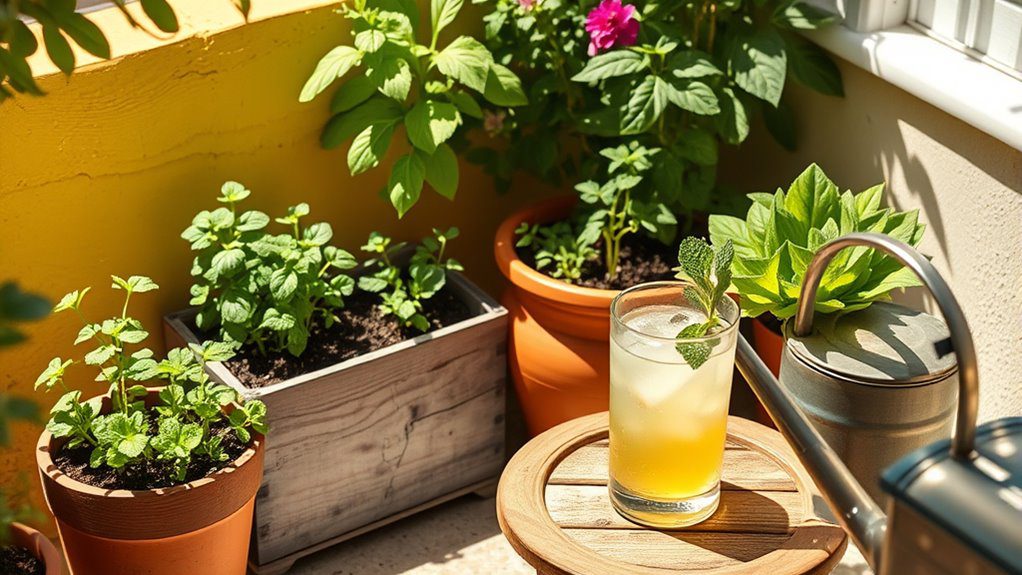
When starting your gardening journey, it’s crucial to begin small. This approach allows beginners to manage their tasks more effectively and gain confidence without feeling overwhelmed. Consider starting with a few pots of herbs or a small garden bed with easy-to-grow vegetables like radishes or lettuce. By focusing on a limited selection, you can learn about plant care, soil health, and watering needs, setting a strong foundation for future gardening adventures.
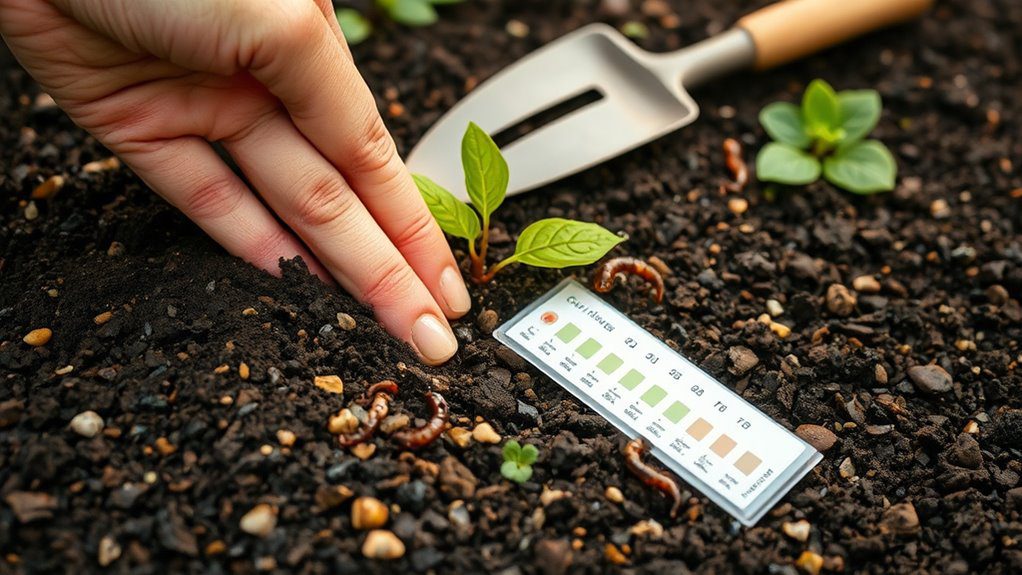
Understanding your soil is essential for successful gardening. Test the pH level to determine its acidity or alkalinity, which affects nutrient availability. Familiarize yourself with soil types—clay, loam, sand, and silt—and their drainage capabilities. Incorporating organic matter, like compost, improves soil structure and fertility. Knowing your soil’s composition will help you choose the right plants and fertilizers, setting a solid foundation for a thriving garden.
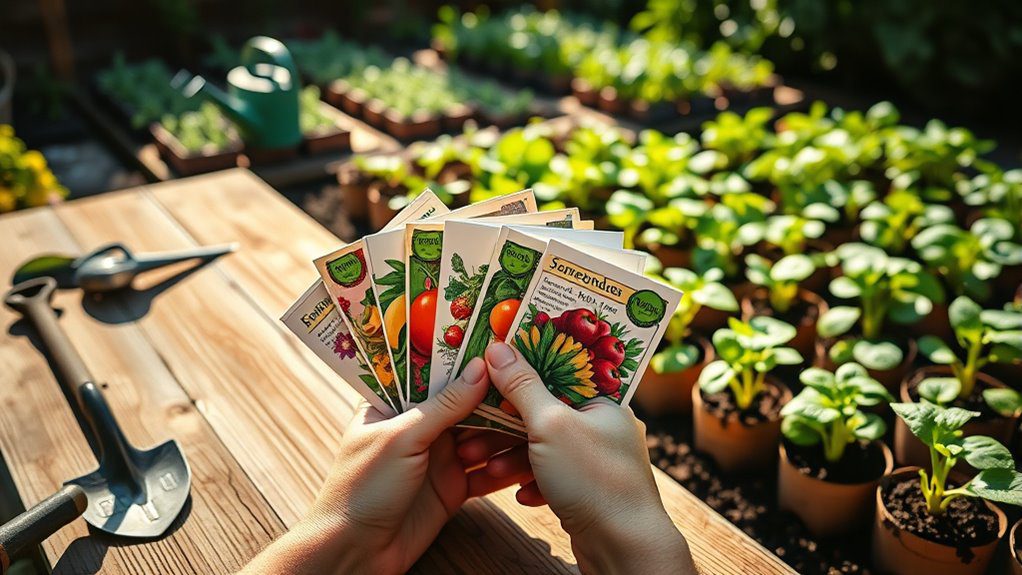
Using quality seeds or seedlings is essential for a successful garden. High-quality seeds are more likely to germinate and produce healthy plants, while seedlings provide a head start to your gardening efforts. Look for seeds from reputable suppliers that are suited for your climate and soil conditions. When selecting seedlings, choose vigorous plants with healthy leaves and strong stems. Investing in quality at the beginning will yield a bountiful and thriving garden.
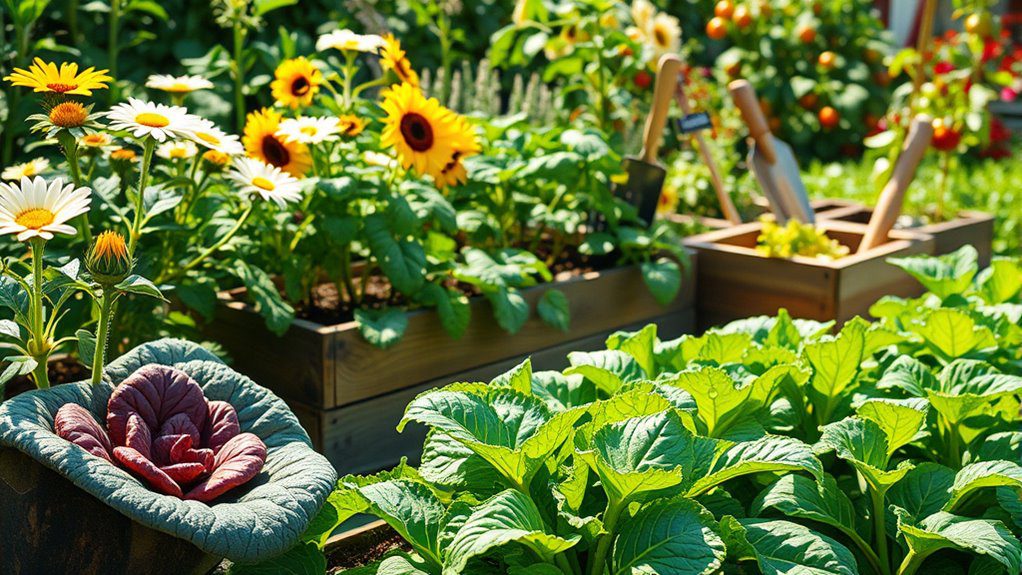
Understanding planting zones is vital for successful gardening. These zones, defined by the USDA, indicate the climate conditions of a region, including temperature extremes and frost dates. By knowing your planting zone, you can select plants that are well-suited to thrive in your environment. This knowledge not only helps guarantee healthy growth but also enhances the likelihood of seasonal blooms and fruitful yields, making it a vital consideration for any beginner gardener.
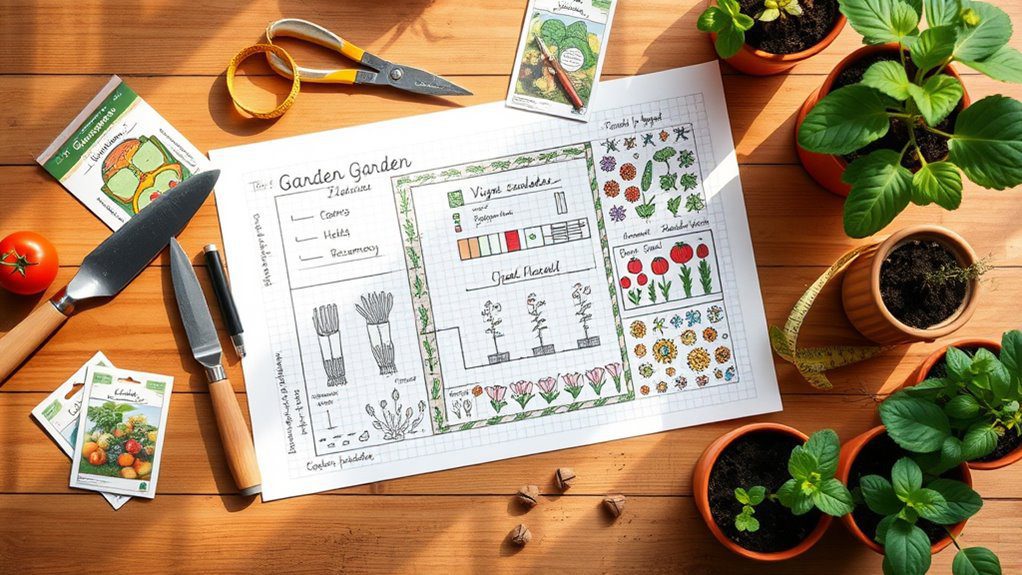
Planning your garden layout is essential for ensuring a productive and visually appealing space. Begin by considering the sunlight, water access, and soil quality in different areas of your yard. Sketch a rough plan, incorporating paths for easy access and zones for different plant types, such as vegetables, herbs, and flowers. Group plants with similar water and sunlight needs together, and don’t forget to leave room for growth. A well-thought-out layout will help maximize space and yield.

Watering wisely is essential for healthy plants and efficient use of resources. Aim to water early in the morning or late in the evening to minimize evaporation. Check the soil moisture before watering to avoid overdoing it; plants prefer consistent moisture rather than soggy roots. Use a soaker hose or drip irrigation for deep, targeted watering. This not only saves water but also encourages deeper root growth, leading to stronger plants.
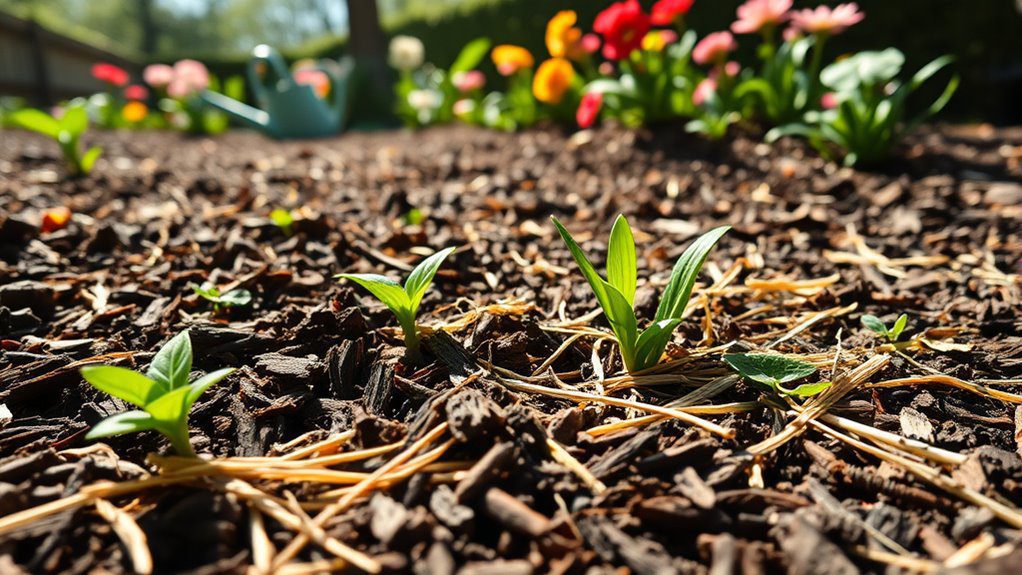
Mulch is an essential tool for moisture retention in your garden. By applying a layer of organic or inorganic material, you create a barrier that slows evaporation and maintains consistent soil moisture levels. Organic mulches, such as wood chips or straw, not only help retain water but also improve soil quality as they decompose. A depth of 2-4 inches is ideal, ensuring plants stay hydrated while minimizing weed growth. Proper mulching fosters healthier plants and eases your gardening efforts.
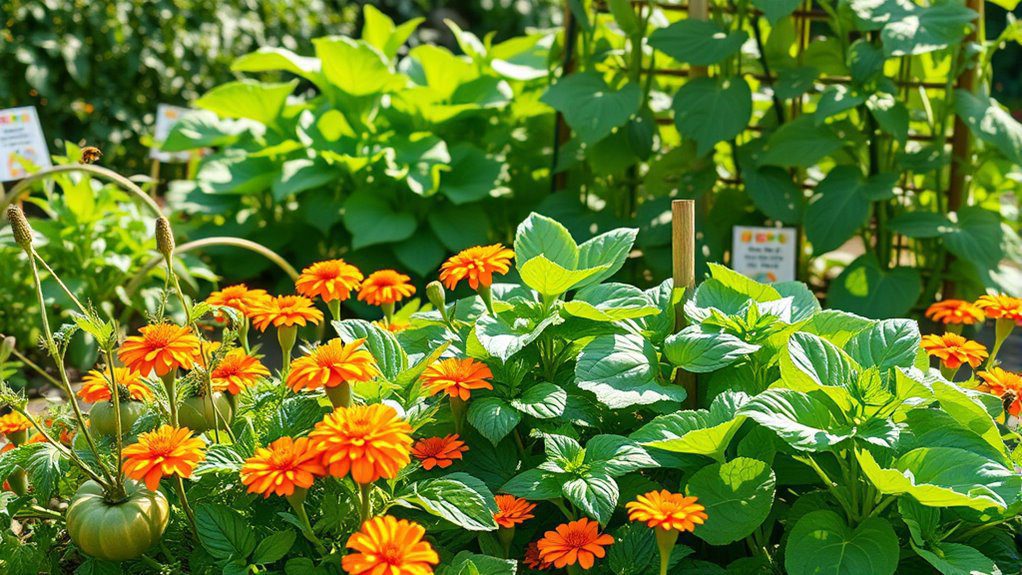
Companion planting is a gardening technique where different plants are grown together to enhance growth, deter pests, and improve overall garden health. Certain plants, when paired, provide benefits such as increased nutrient uptake or natural pest repellence. For example, marigolds are known to repel nematodes, while basil can enhance the flavor of tomatoes. Understanding the relationships between plants can lead to a more thriving garden, making companion planting an essential strategy for beginners.
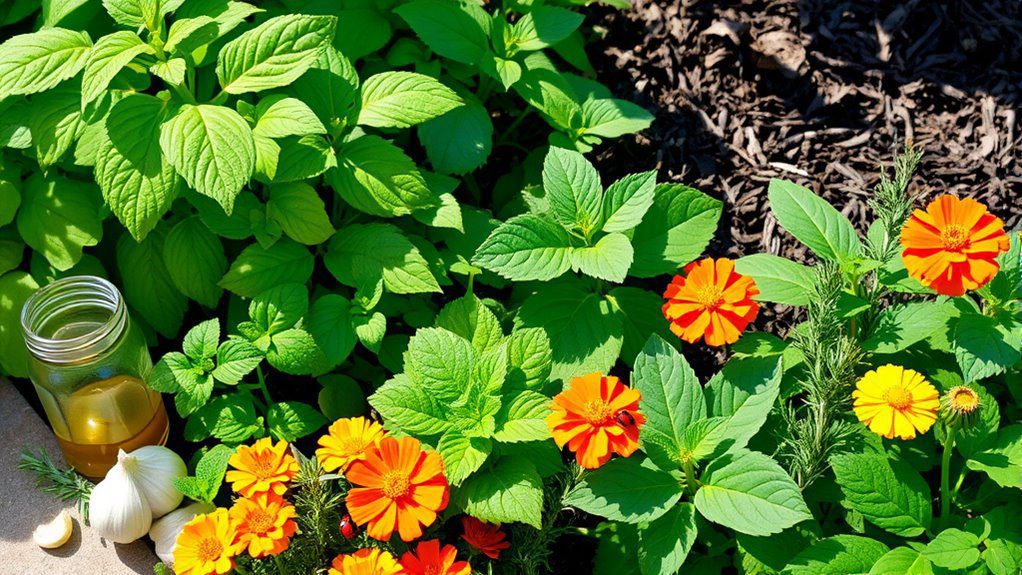
Keeping pests at bay naturally is an essential aspect of gardening for beginners. Use companion planting, where certain plants repel harmful insects, to create a balanced ecosystem. Introducing beneficial insects, like ladybugs and lacewings, can help control pest populations. Additionally, homemade solutions like neem oil or garlic spray can deter unwanted visitors without harming your plants. Mulching and maintaining healthy soil will also contribute to a thriving garden, reducing pest problems naturally.
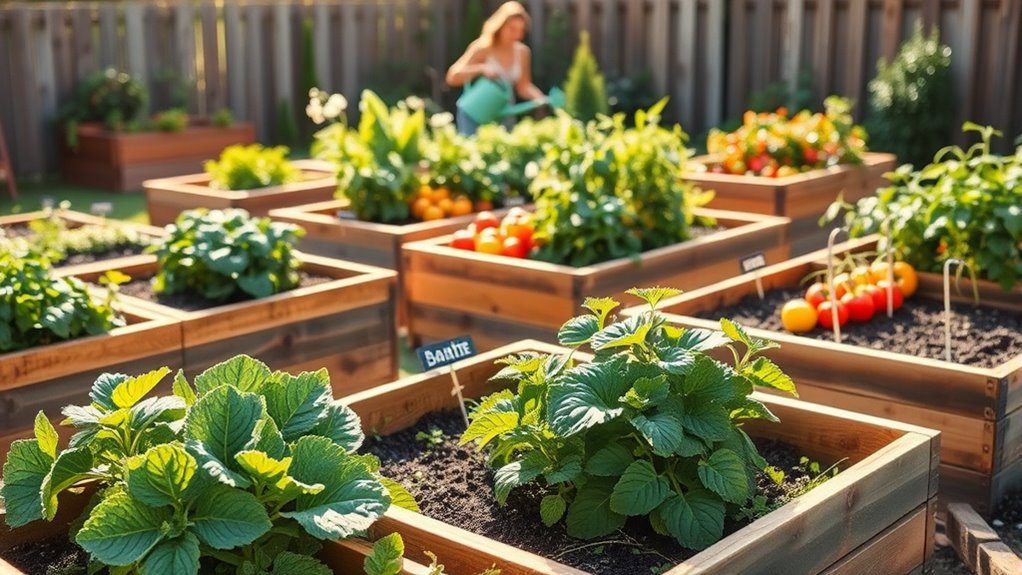
Using raised beds is an excellent gardening technique for beginners. These elevated garden plots improve drainage, enhance soil quality, and make it easier to manage weeds and pests. They also provide better accessibility, reducing the strain on your back and knees. Raised beds can be built from various materials, allowing for customization to fit your space. With controlled soil conditions, crops have a better chance to thrive, making gardening more enjoyable and productive for novice gardeners.
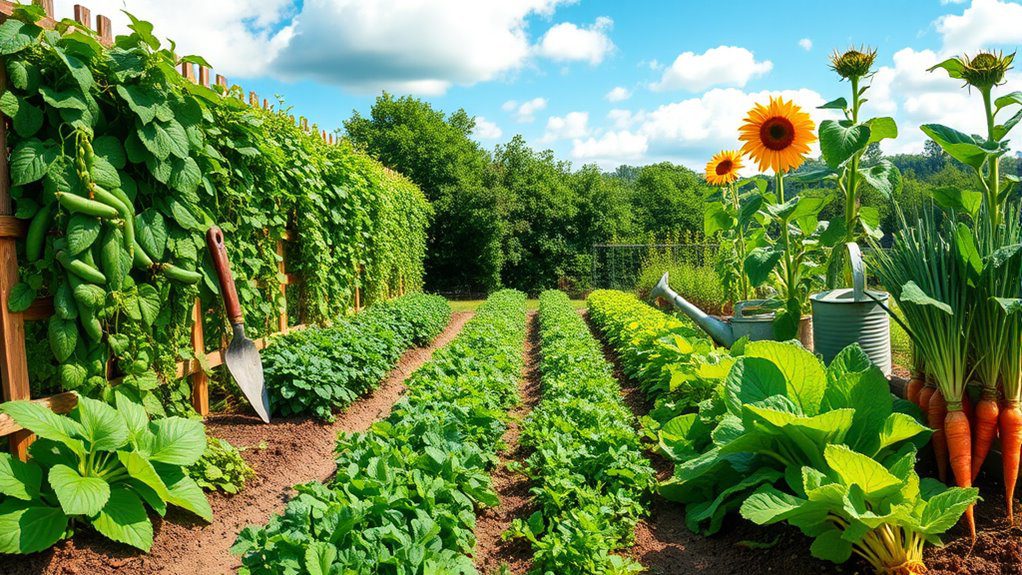
Implementing crop rotation is an essential gardening practice that helps maintain soil fertility and prevent pest and disease build-up. By changing the location of specific crops from one season to the next, you can reduce nutrient depletion and encourage biodiversity in the garden. For beginners, starting with a simple rotation plan—such as alternating between legumes, leafy greens, and root vegetables—can enhance soil health, boost yields, and create a more sustainable gardening ecosystem.
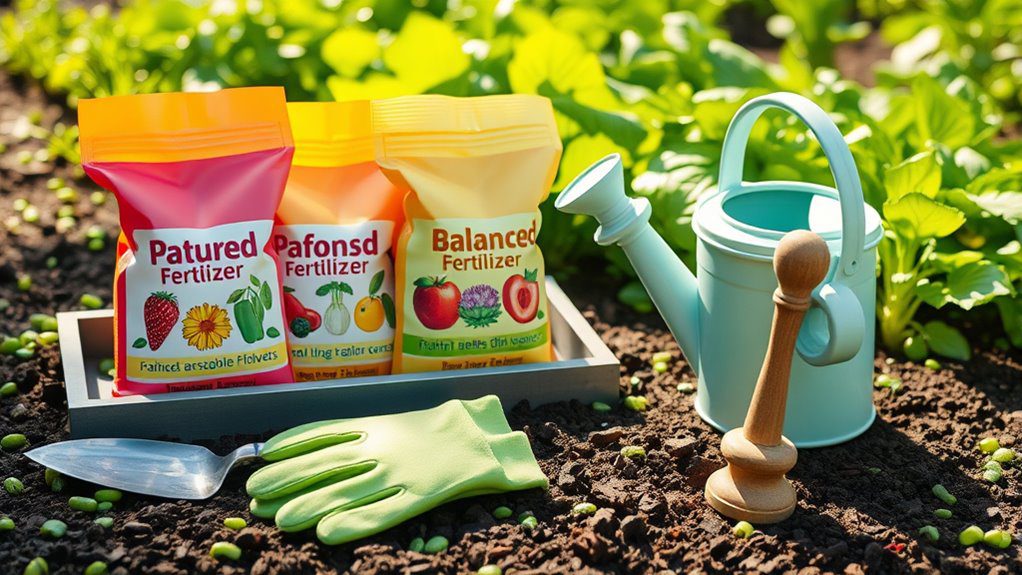
Fertilizing appropriately is essential for a thriving garden, especially for beginners. Start by understanding your soil’s nutrient needs through a soil test, which will inform you about pH levels and existing nutrient content. Select a balanced fertilizer that suits your plants and follow the recommended application rates. Fertilize during the growing season to promote healthy growth, remembering that over-fertilization can harm your plants. Regularly monitor their health and adjust your fertilization routine as necessary.
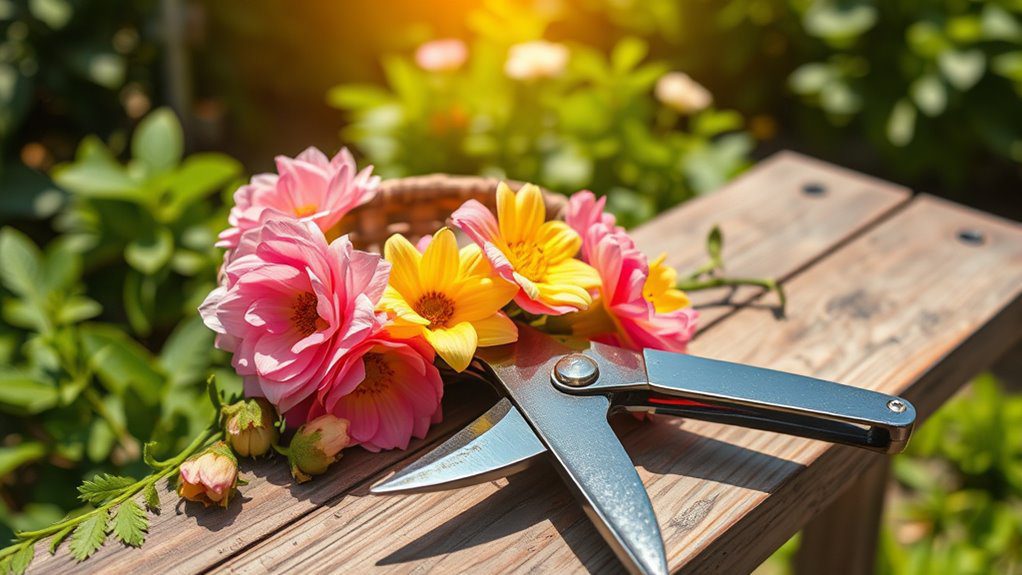
Pruning and deadheading are essential practices for maintaining a healthy garden. Regularly trimming back dead or wilted flowers encourages new growth and prolongs blooming, while removing any dead leaves or branches improves air circulation. This not only enhances the overall appearance of your plants but also prevents disease. For beginners, using sharp, clean tools and cutting at the right angle will yield the best results, promoting a vibrant and thriving garden.

Staying informed on plant care is essential for any beginner gardener. Knowledge of your specific plants’ needs—such as sunlight, watering frequency, and soil type—will help you create an ideal environment for growth. Regularly checking resources such as gardening books, online forums, and local gardening clubs can provide valuable tips and updates. Additionally, staying aware of seasonal changes and local pests allows you to proactively address issues, ensuring your plants thrive throughout their growth cycle.
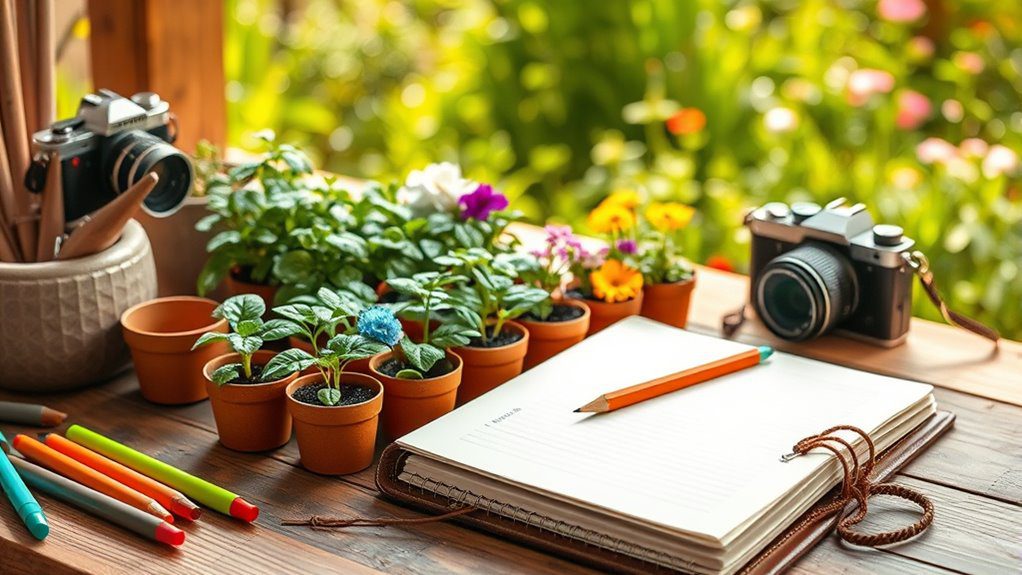
Keeping a gardening journal is an invaluable practice for beginners. It allows you to document your gardening experiences, track the growth of your plants, and note any challenges you face. By recording details such as planting dates, weather conditions, and gardening techniques used, you can learn from your successes and mistakes. Over time, your journal will serve as a personalized reference guide, enhancing your gardening skills and helping you create a thriving garden.

Gardening is not just about the end result; it’s about enjoying the journey! Take your time to appreciate each step, from planting seeds to watching them grow. Allow yourself to engage with nature, breathe in the fresh air, and soak in the beauty of your surroundings. Celebrate small victories, whether it’s the first sprout or a burst of colorful blooms. Embrace the process, and you’ll find gardening to be a fulfilling and rewarding experience!
As you begin your gardening journey, remember that patience and persistence are your greatest allies. Just like a seed takes time to grow into a flourishing plant, your skills will develop with experience and care. Embrace the process, celebrate your successes, and learn from any setbacks. By staying informed and nurturing your plants, you’ll cultivate not just a garden, but a deeper connection to nature. So, grab your tools and dig in—your green thumb awaits!

Don't let aphids, slugs, and caterpillars ruin another plant. Take back control with simple, natural methods that actually work.